10 Easy Classroom Management Strategies

Looking to find some new classroom management ideas to encourage positive behavior in your classroom? Check out these tips that I’ve used in my first grade classroom to encourage positive behavior. These classroom management strategies can be used in any class from kindergarten to third grade!
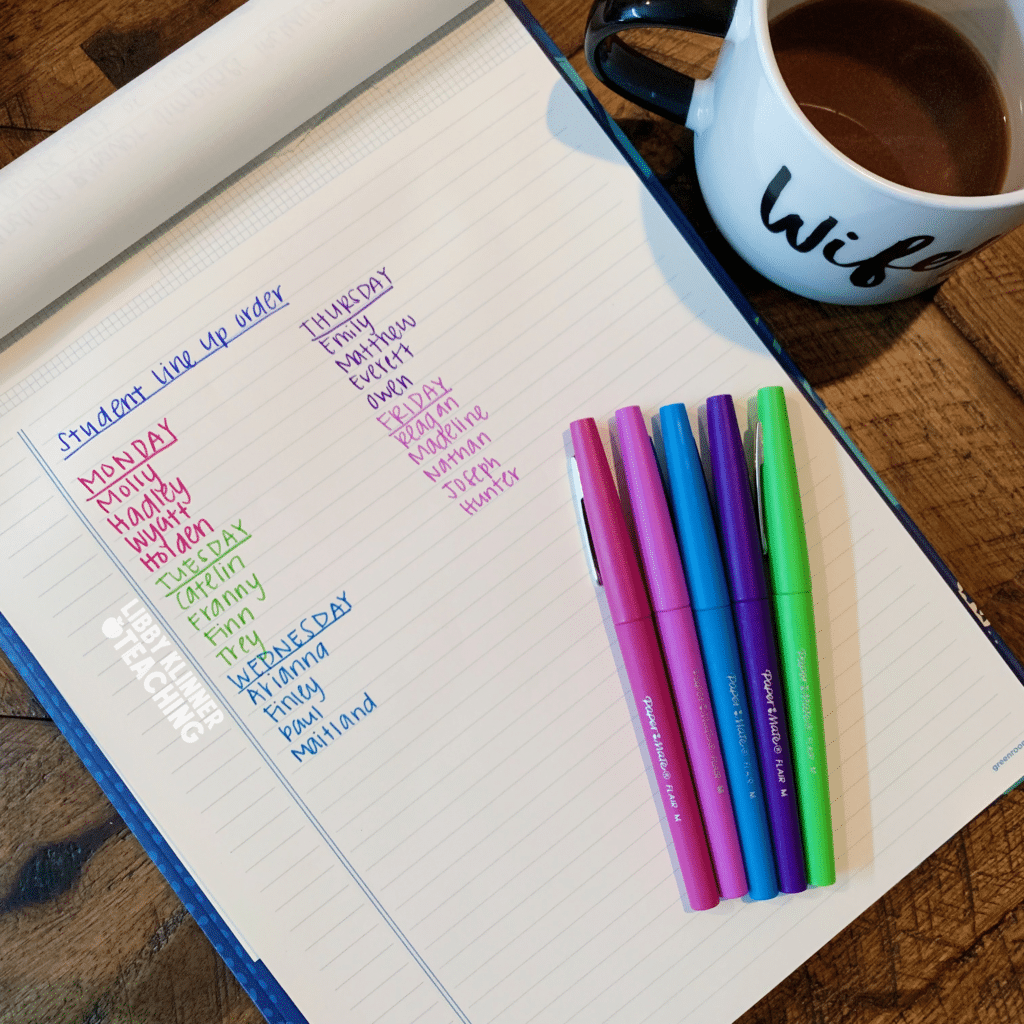
1. Days of the Week can help with classroom management
One classroom management technique that I began using while student teaching has STILL stuck with me. I have tried many different classroom management strategies inside the classroom, but I continue to use this strategy when we are outside the classroom.
Many teachers assign student jobs such as line leader, door holder, caboose, etc. Some teachers go as far to ask students to line up in alphabetical order, birthday order, number order, etc. This can get old because students end up standing next to the same people everyday, which I found led to behavior issues in line as well. Instead of assigning an order that we follow every day, I assign students days of the week. That way, they are not standing in the same spot each day.
Here’s how this management strategy works:
On Monday, the students in that group line up at the front of the line. The Tuesday students are behind them. Then come the Wednesday students, Thursday, etc. On Tuesday, the Tuesday group lines up first, followed by Wednesday, Thursday, and Friday. The Monday students are at the back of the line. On Wednesday, the Wednesday group of students line up first, followed by Thursday, Friday, and Monday. The Tuesday students are at the back of the line, and so on.
If there is a line leader, door holder, or caboose, they maintain their spot all week or until we change jobs. Creating these groups allows me to separate students that may influence each other to make poor choices or be silly. In first grade, it’s HARD to always follow the rules, so routines like this are necessary. I really like this one because it gives structure and allows for a little bit of student choice, while also following a routine that won’t become stale.
At the beginning of the year…
I always do a few trial runs of this routine. I’ll make up a draft of the groups, write the first letter of their day on their desk in dry erase marker, and make adjustments as needed. As the year goes on, I switch around the groups as I get to know them better and they become more comfortable with their classmates.
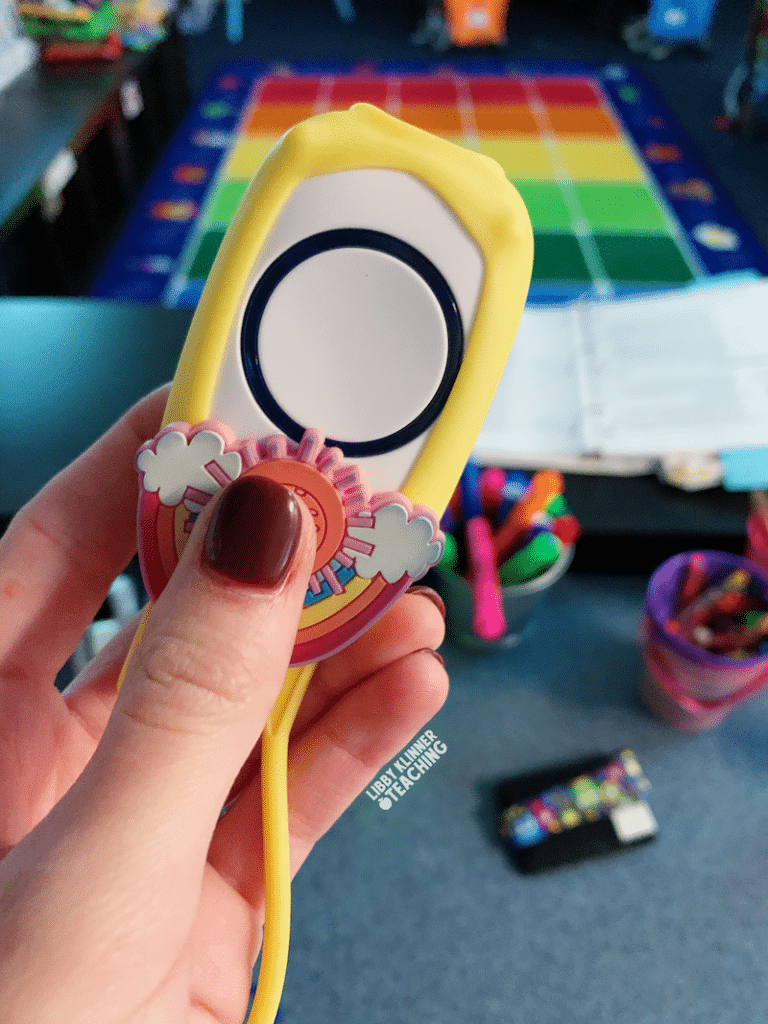
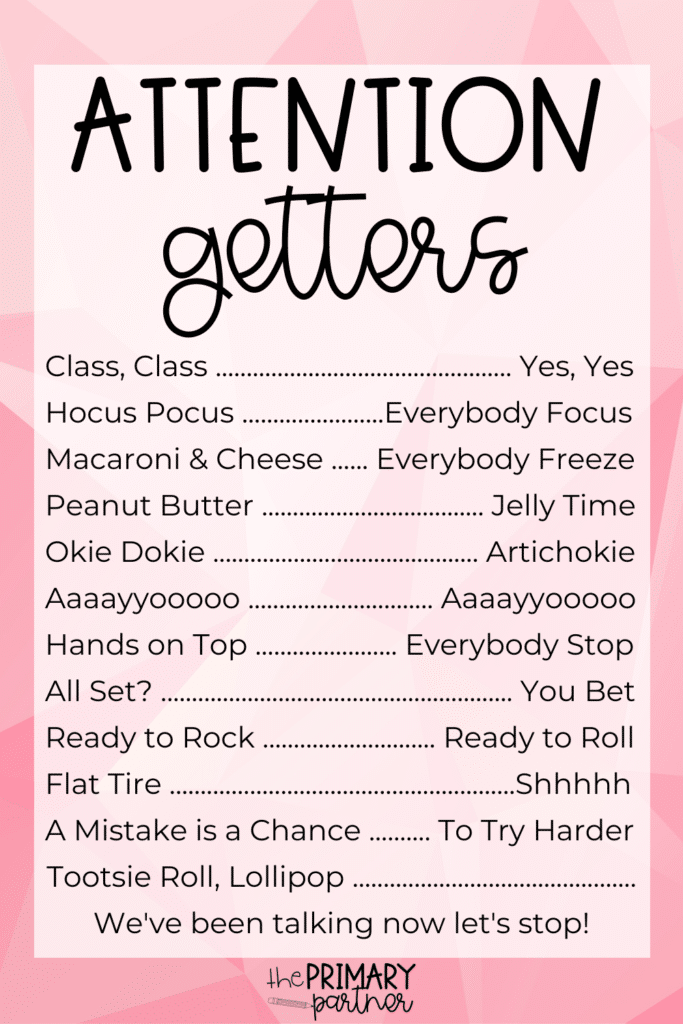
2. Use call outs as a management trick
Call outs and attention getters are common in primary classrooms BUT they are also great to use with older students! Using a doorbell like the one above is an easy way to call attention.
If you don’t want to buy a doorbell you can do verbal call outs as well! Some common callouts that I use are above.
I also like to personalize them for my classroom based on what my students are interested in, such as superheroes, music, sports teams, or games. If you are teaching older students, try to make the attention getters relevant to them. For example, if they are all familiar with a Tik Tok dance, use part of that dance as a call out.
Make classroom management fun!
Attention getters don’t have to solely be auditory! Add some moves and make them fun! The more they relate to your students, the more they will engage, no matter how old they are. Classroom management strategies made fun, right?

3. Use positive notes in your classroom management strategies
Whether you write them on an index card, on their desk in dry erase marker, or on their hands, tell your students you appreciate them! This may not be something that comes to mind when you think of classroom management. However, building relationships is key to managing your classroom.
Point out specific things that they have done that make you proud. When your students know the classroom rules or expectations and are then praised for doing it, your expectations for them are more clear and that reinforcement makes them much more likely to do it again.
Positivity in the form of Post it Notes
If you’re looking for something different to use for student positivity notes, check out my Post It Positivity Bundle (linked here). You can easily print these out on sticky notes and have them ready to go whenever you need them OR use the editable document to make them personalized for each student. These are SO easy to use in the classroom. From my own experience, I am much more likely to give them out to my students if I already have them prepped. I just pick and stick and write an additional note if needed. Positive reinforcements go a long way in managing your classroom!

4. Incorporate flexible seating as part of your management strategy
Flexible seating is so fun! Many students learn much better when given options that make them more comfortable. Before we get into this strategy, let me be clear that if a student needs a specific type of flexible seating to be successful in the classroom, you should not take that seating away as a punishment. You should always provide your students with the tools they need to be successful. This seating incentive should be an EXTRA seating option that is not being used.
The Story of the Super Stool
I found the stool above at a Goodwill. It was originally from Ikea (linked here or other options here and here) and I cleaned it up for my classroom! I tried it out as a seating option for a few different students but it was deemed as not the best option for those students. I continued to use the stool in another area of the classroom. However, students began to ask if they could sit on the stool. I decided to use it as an incentive since there was so much interest in the stool. I wrote on it in metallic Sharpie and the ‘Super Stool’ was born! Some days (not all days because I forget!!) I choose a student who showed a lot of effort, personal growth, etc. that gets to sit on the stool for the day.
There you have it! Nothing fancy, just adding extra seating that’s not being used as flexible options to incentivize good choices!
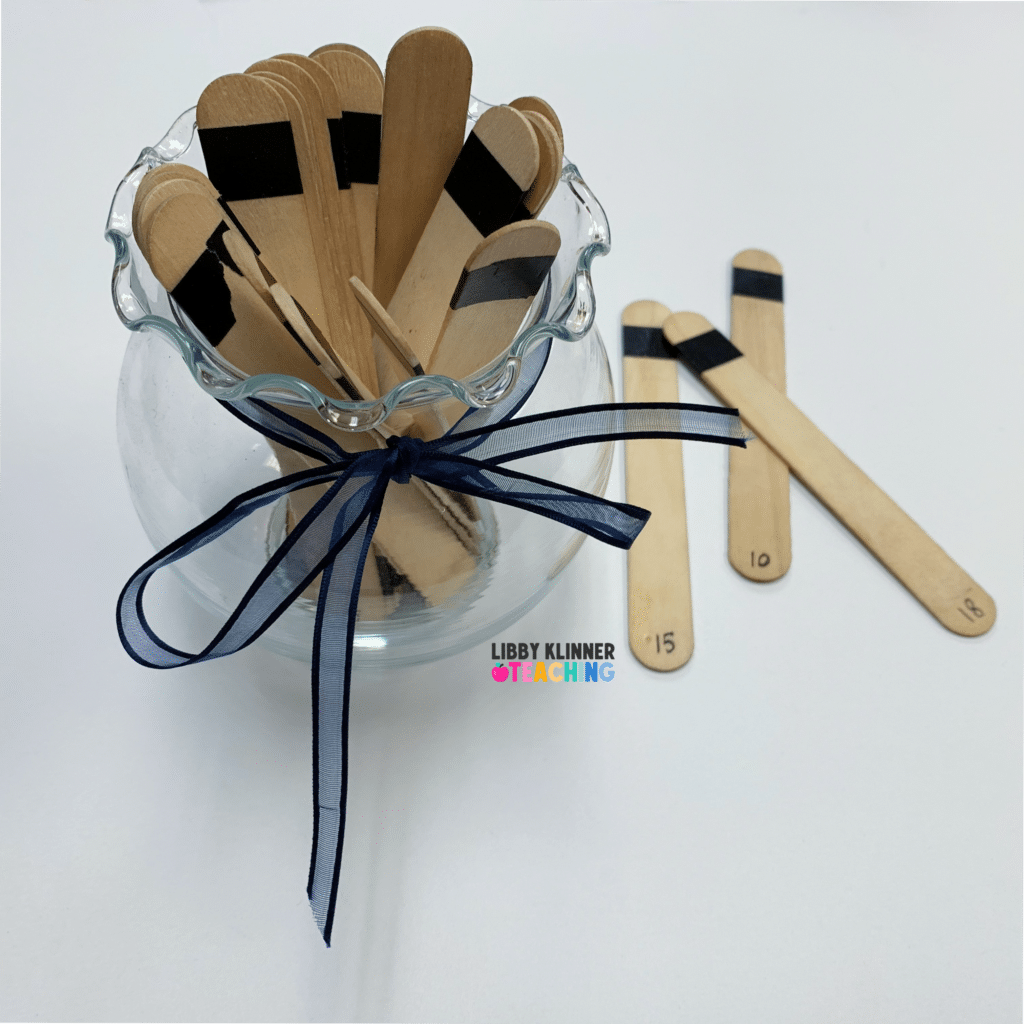

5. Choose a ‘Secret Student’ to watch
Here’s a strategy that I’ve used with my students when we are inside the classroom, walking the halls, or even in the lunch room! I take jumbo popsicle sticks (I like these because there are so many – they last forever!) and write my students’ numbers on one side. On the other side, I wrap washi tape around the end. It doesn’t have to be washi tape, but I used it because it’s easy to see from far away. I place these sticks in a jar tape side up.
When I decide to choose one that is the ‘secret student,’ I make sure that I’m the only one who sees the stick. I watch that student for the designated amount of time and determine whether they earned their reward. If they don’t earn the reward, I don’t announce their name and I put their stick back in the jar with the tape side up. If they did a good job, I announce their name, they’ll get their reward, and I place their stick tape side down in the jar. When all the sticks have been chosen, I flip them all tape side up in the jar.
You can decide what you want the reward to be. I use punch cards and coupons (which I tell you about below) but the reward could be anything! Some ideas are extra time doing something they love, brag tags or bracelets, or their name on the board. Also, if your students don’t have assigned numbers, you can write their initials instead!

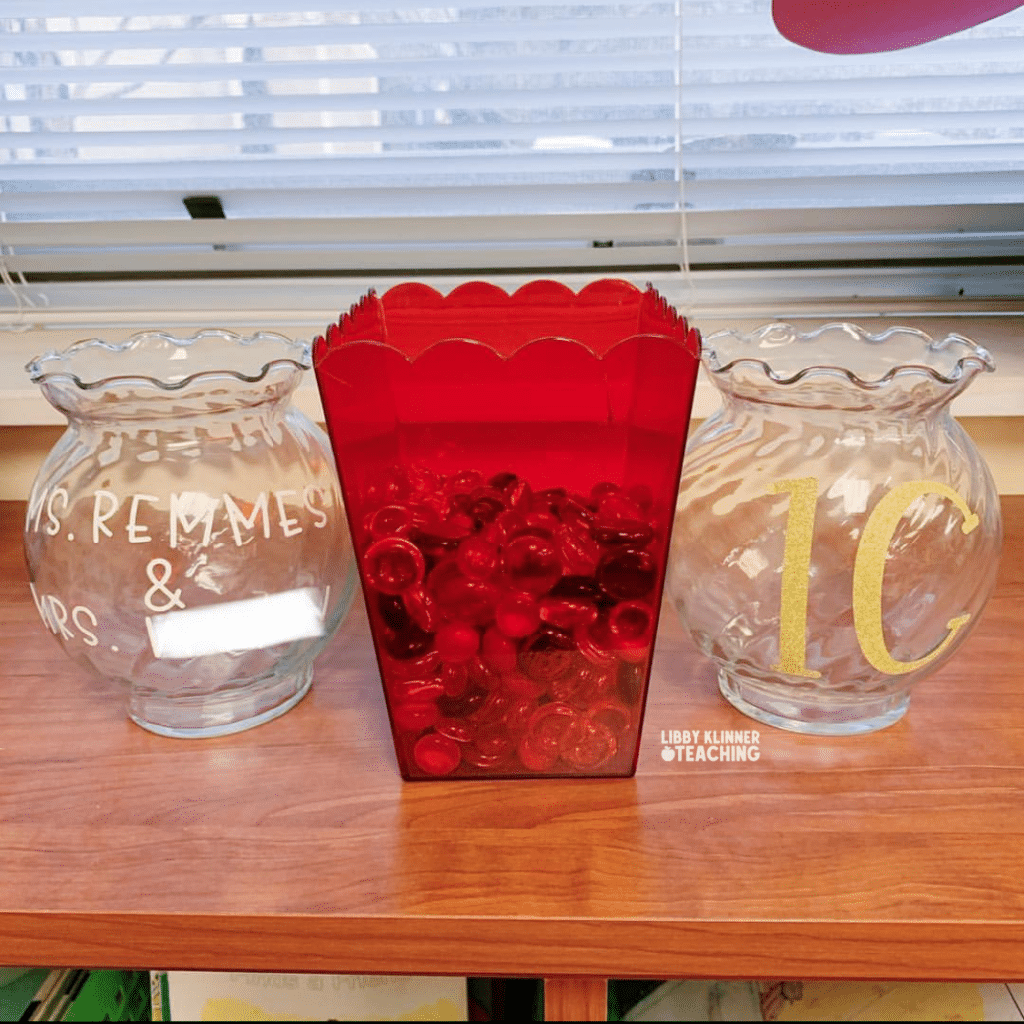
6. Incorporate competition in your classroom management plan
I found these water beads and jars in my parents’ old home and knew I would be able to use them in the classroom. They sat in my class closet for awhile before I decided to use them in my classroom management toolkit! Initially I wrote on the jars using dry erase markers (ha! so cute, right?) but eventually I was gifted a Cricut and made labels. One jar is for my aide and me and the other jar is for my class, which was called ‘1C’ at the time. I also have a large container for all the beads.
This is a week-long competition, and it is one of my easiest classroom management strategies! If you don’t have water beads, you can use pom-poms, beans, plastic beads, cotton balls, popcorn kernels, etc. If you don’t have jars, find some transparent or semi-transparent cups!
How this management strategy works:
Every Monday we begin our ‘competition.’ It’s teachers versus students, and my first graders eat that up! I pretend that I am very competitive about winning and they love it. Together we count up my beads first and then theirs. If they win they earn a reward as a class. If I win, I earn a ‘reward.’ I usually pick 10 minutes of quiet reading if it’s later in the year or I’ll choose something like they each need to come up with a compliment for a classmate.
As the week goes on, I give the class beads if they are following directions or making good choices. If I notice that they are not, I ‘earn’ a bead in my jar. I do this randomly throughout the week. If they are not making good choices, I try to give a warning before actually giving myself a bead. I say something like, “Oh no I might earn a bead during this partner activity,” to remind them of my expectations.
Later in the year, I’ll even randomly pick a student and ask them to pick a bead and be the ‘bead judge’ for a few minutes. I always find it interesting whether they judge the class honestly or not. Either way, I leave it up to them!
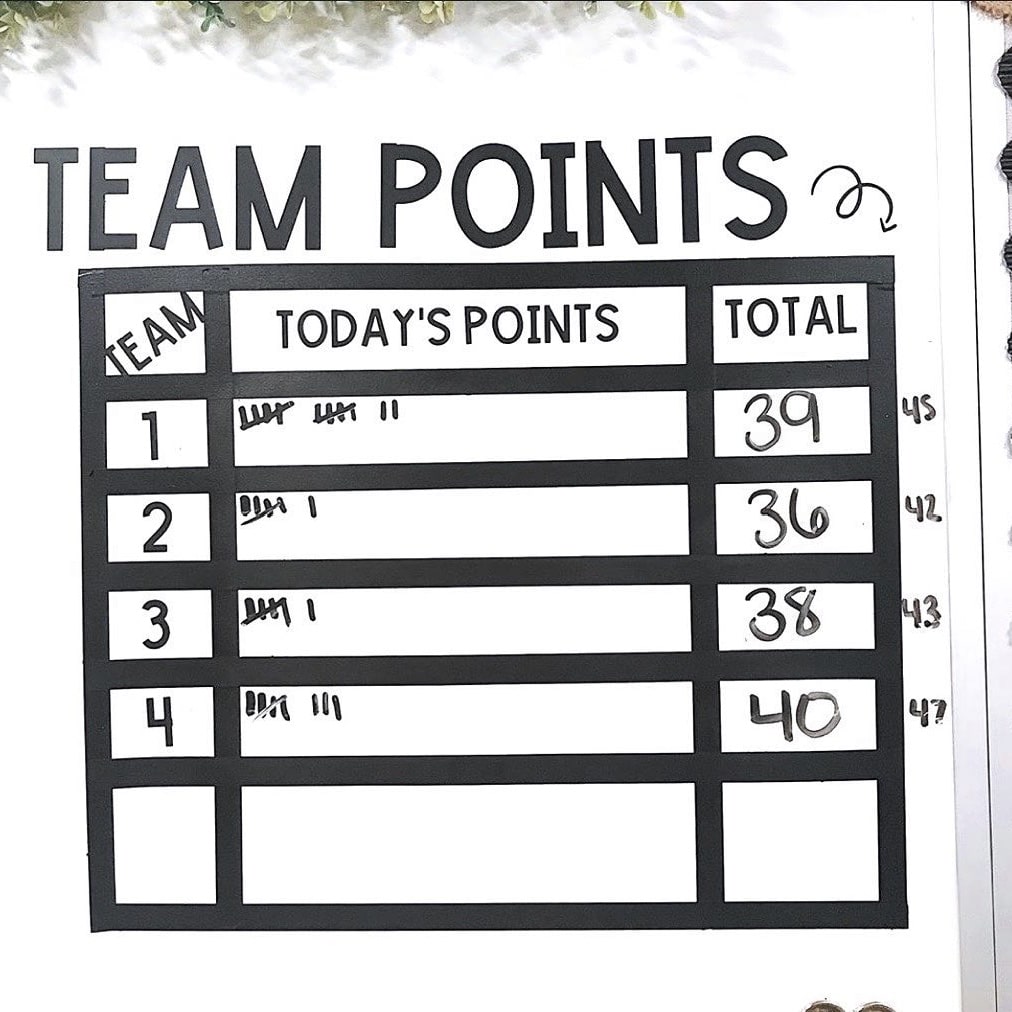
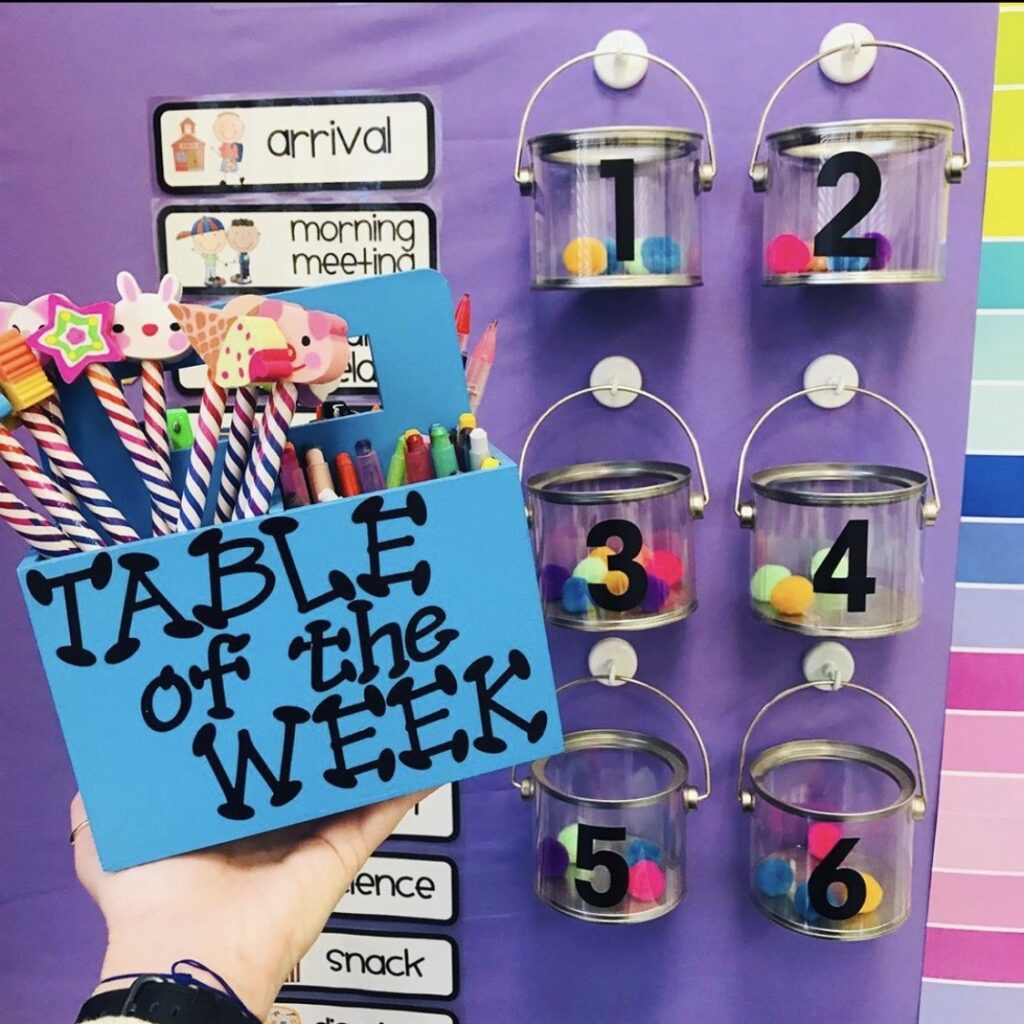
7. Use team competitions to engage students
The photo on the left above is from The Elementary Mitten because my team competition board does not look nearly this pretty! I just write in the corner of our whiteboard, so you don’t have to get fancy with this classroom management strategy. Click the picture to read more about how she uses this classroom management strategy with older students.
I assign each group of desks or each table a number. Some years I’ve assigned them colors, shapes, or even superheroes (that was my theme). This works similarly to the class bead competition. When I see a team working well together, following directions, they get a tally. At the end of the week, the team with the most tallies wins a reward! You can see another creative, cute way to do the team competition above and to the right from A Primary Mindset! I LOVE how she set hers up! Adorable! Click the picture to read more about it.
If you’re interested in recreating her set up, you can find the clear containers here, the pompoms here, similar caddy here, and similar magnetic hooks here.
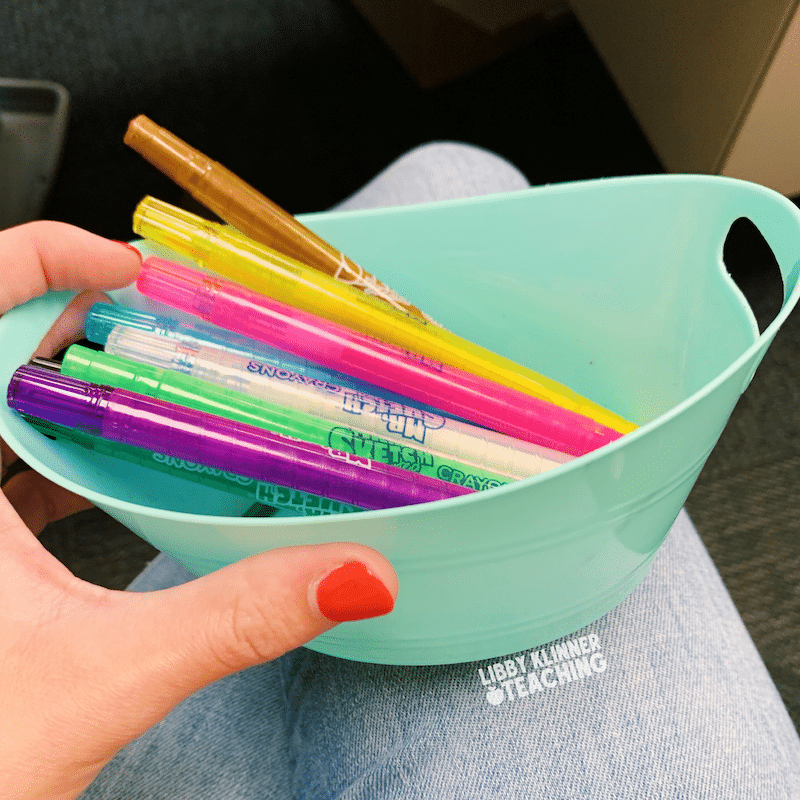
8. Use special supplies as an incentive for positive behavior
Similar to using the ‘Super Stool’ as one of your classroom management strategies, you can use special supplies as a reward for positive behavior! These smelly crayons were a gift from a parent and my students LOVE using them.
Similar to the Super Stool, I randomly choose a student who showed exceptional progress that gets to use the Special Supplies all day. When I announce the student that has earned this reward, I always tell the class what specifically he/she/they did to earn it.
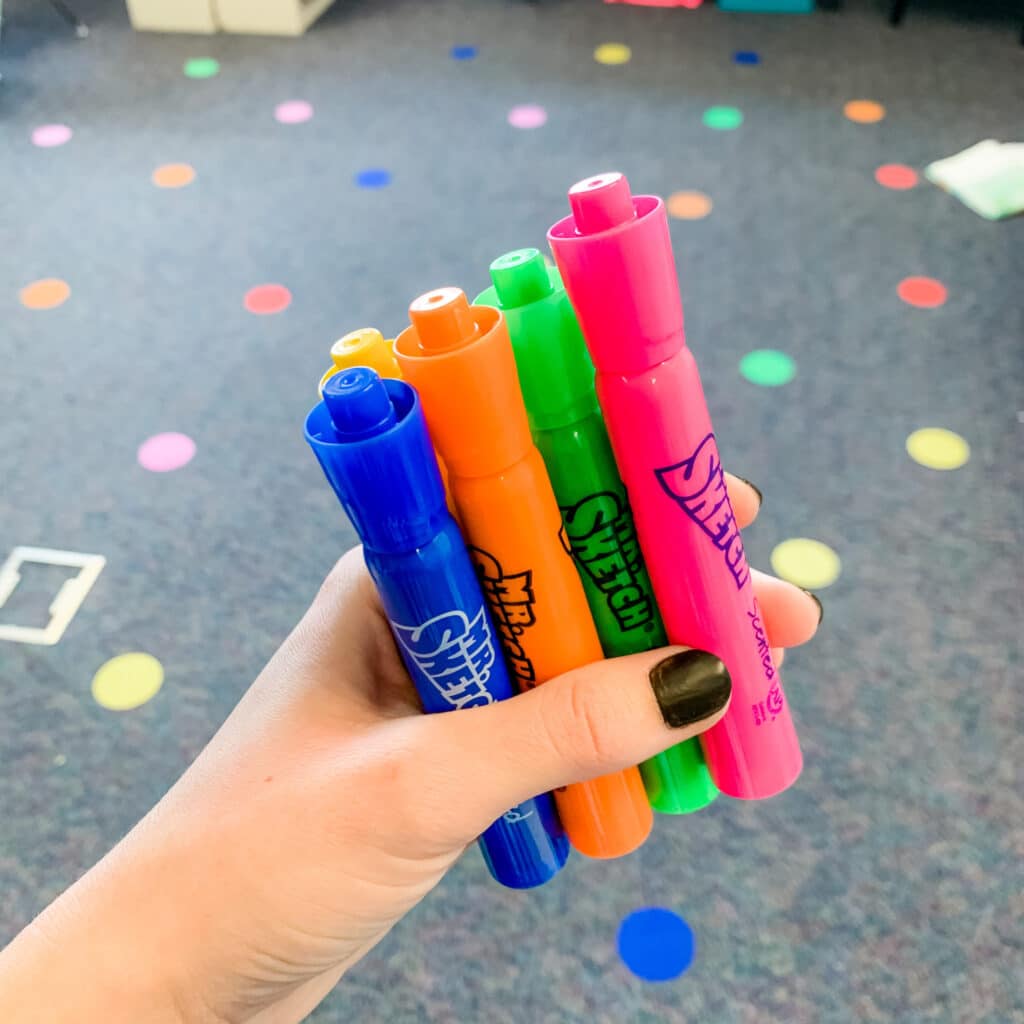
I also do Smelly Smileys with my students. A Smelly Smiley is when I give students a smile on the back of their hand using a Mr. Sketch marker when I see them on task. It’s a quick way to reinforce expected behaviors.
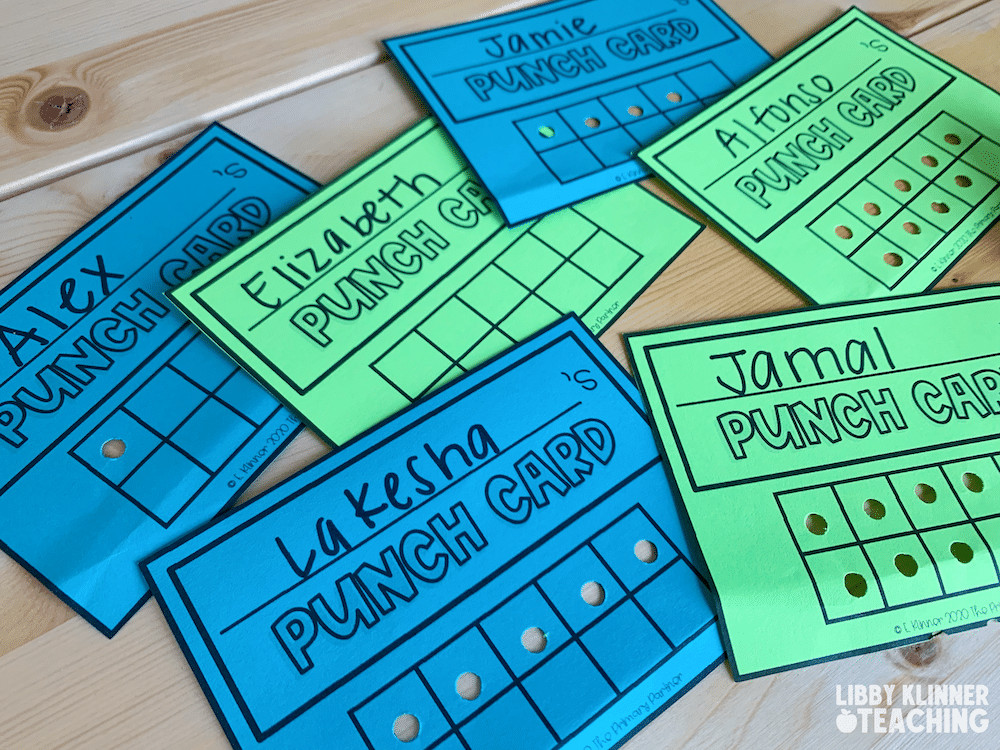
9. Use these FREE punch cards as a management tool
This is the primary driver behind my classroom management strategies. I’m a big proponent of punch cards for a few reasons.
First, they provide students with a visual representation for where they stand in the classroom behaviorally. Second, it helps with math skills!! I purposefully use ten frames in my punch cards so that my first graders are constantly counting to ten and doing math in their head. Third, they create an attainable goal for students.
Here’s how this management strategy works:
Each student has a punch card with his/her/their name on it. I typically print the punch cards on different colors of construction paper and use those different colors for alternate ways to group my students. For example, instead of using leveled groups for an activity, I tell students that all the red punch cards will work together and all the orange punch cards will work together. Another way that I group is I ask one color to find a partner in another color. I may ask the blue punch cards to find a partner that has a purple punch card. This is an easy way to change up groups and partners!

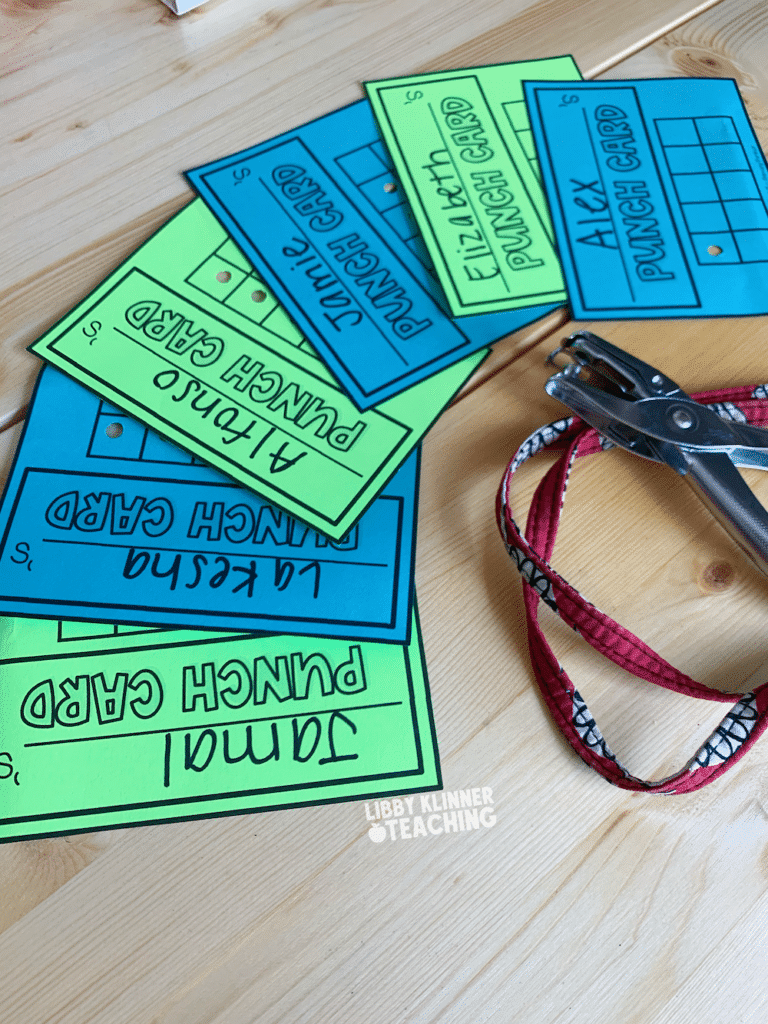
I wear my hole puncher on a lanyard around my neck EVERY DAY. I’m not saying you should do this too….buuuut it was super helpful for me! If I have the hole puncher around my neck I’m much more likely to give out punches for good choices! Note – not all hole punchers have a loop to attach. This one does – it makes wearing it a lot easier! I keep the second one in my desk in case I take my lanyard off while I use the restroom and leave it in the teachers’ lounge (it’s happened before). While I wear my hole puncher as an accessory, I also search for students that are making good choices.
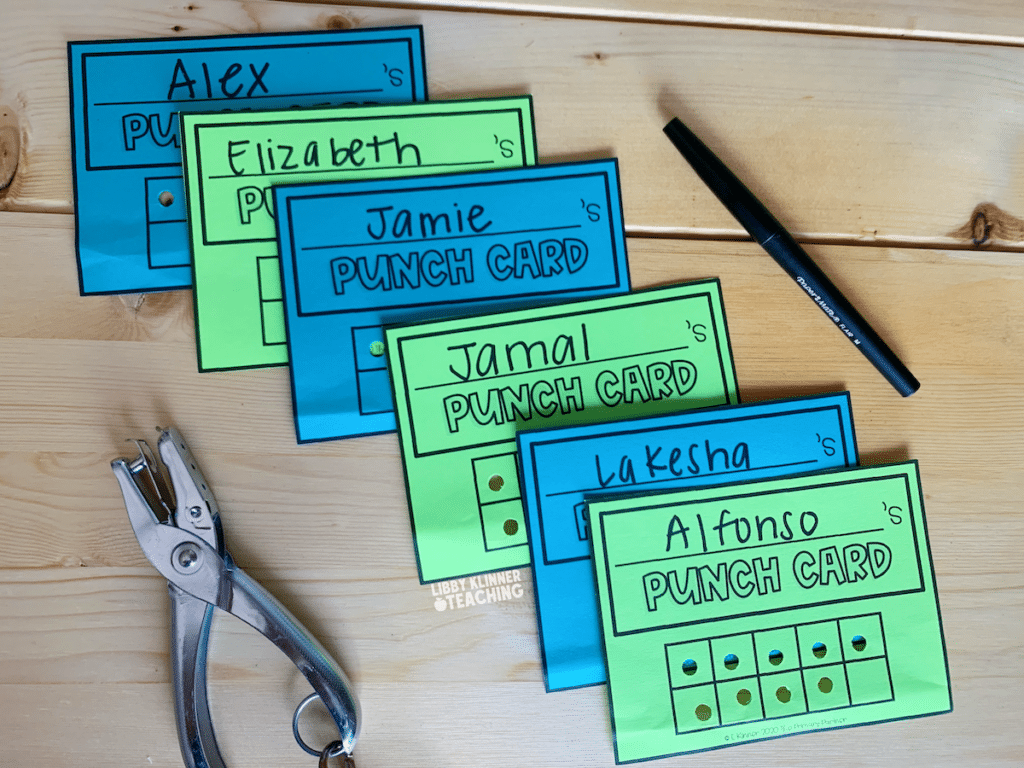
VIPs (Very Important Points) About this Management Strategy
One very important thing to remember: if you have students that have behavioral challenges, you must look for any little thing they do that can earn them a hole punch. It might be hard at times, but seeing success in themselves is so important for those students. Classroom management strategies like these will not work unless you help struggling students feel some success.
Another important aspect of this management tip is privacy. If the punch cards are out on display, they simply become another form of a clip chart. You don’t want your students to compare themselves to their peers, especially if they are already aware that behavior may be more of a challenge for them. To maintain my students’ privacy, I use a shoe organizer!

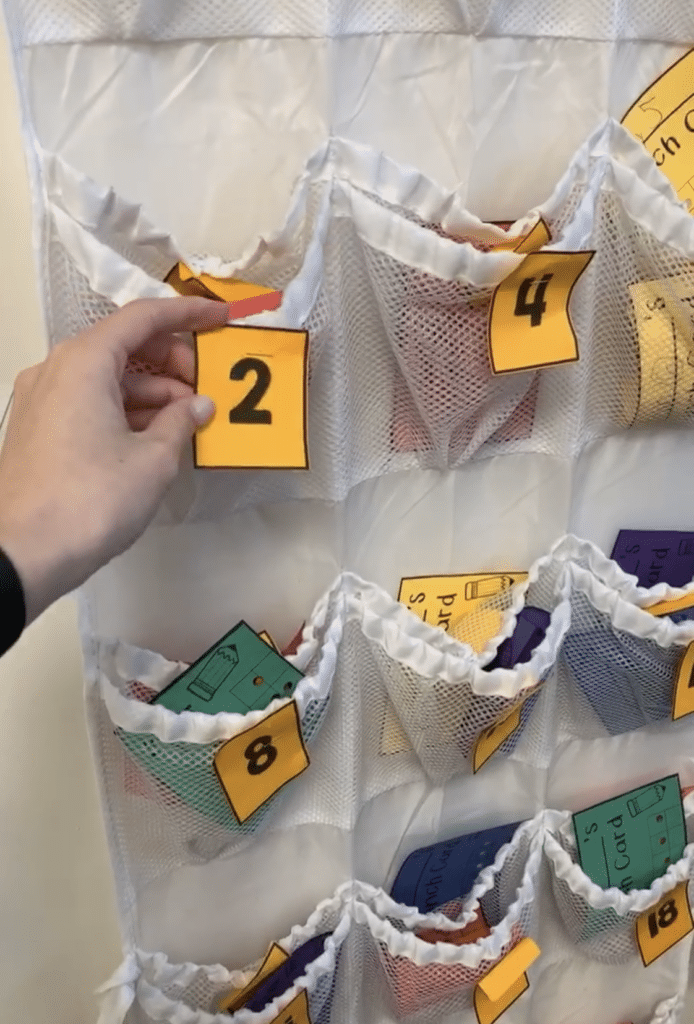
When I originally started this system, I hoped that my students would keep track of their own punch cards. Unfortunately, that wasn’t the case with my first graders (shocking, I know). So I took this old shoe organizer, printed out numbers and stapled them to each pocket. Ta-da! New punch card holder!
The shoe organizer prevents students from peeking at other punch cards but still allows them to be easily accessible. My shoe organizer has two pockets for each opening which is important if you teach little ones! Many organizers hold about 20-24 shoes, which means some students would need to put their punch cards at the top of the organizer. Not really feasible for first graders without a ladder! If you’re looking for a similar shoe organizer, you can find it here or here.

When students fill up their punch card, it goes home with a nice note to their parents or guardians. If you’ve already downloaded the free punch cards to use in your classroom management strategies, go back and re-download! They got a little update!
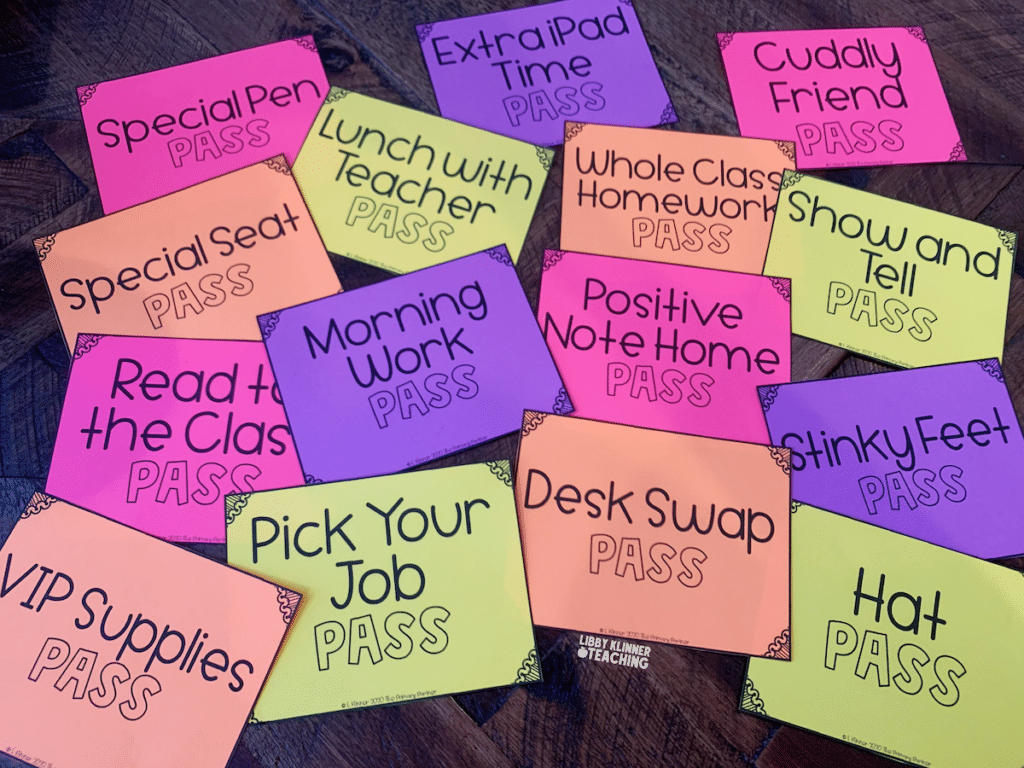
10. Motivate your students with class coupons
An easy way to incorporate some of the classroom management strategies listed above is by using class coupons! My students earn class coupons when they fill up a punch card, but you could give them out however you like!
At the end of the day, I call students up to my desk that have filled up their punch card. They can choose from the various coupons I keep in my ‘coupon file.’ Unlike the punch cards, the students are required to keep track of their own coupons. Some ask to take them home to keep them and that is totally fine with me! I ask them to write their name on the back to help with coupons that may get lost.
Some coupon favorites are listed below:
- Show & Tell Pass: Students may bring in one item for show & tell at the end of the day.
- Stinky Feet Pass: Students may take their shoes off during the day while we are in the classroom.
- Special Seat Pass: Students can choose to sit anywhere (or on anything) in the classroom.
- Pick Your Job Pass: Students can choose whichever job they want when it is time to change.
- Desk Swap Pass: Students can change desks with another student for the day (with teacher approval).
- Read to the Class Pass: Students can bring in their book of choice or choose on from the class library to read to their classmates at the end of the day.
- Whole Class Homework Pass: This was the most coveted coupon. Students have to collect 5 other coupons in order to trade in for this one. It was a big hit!
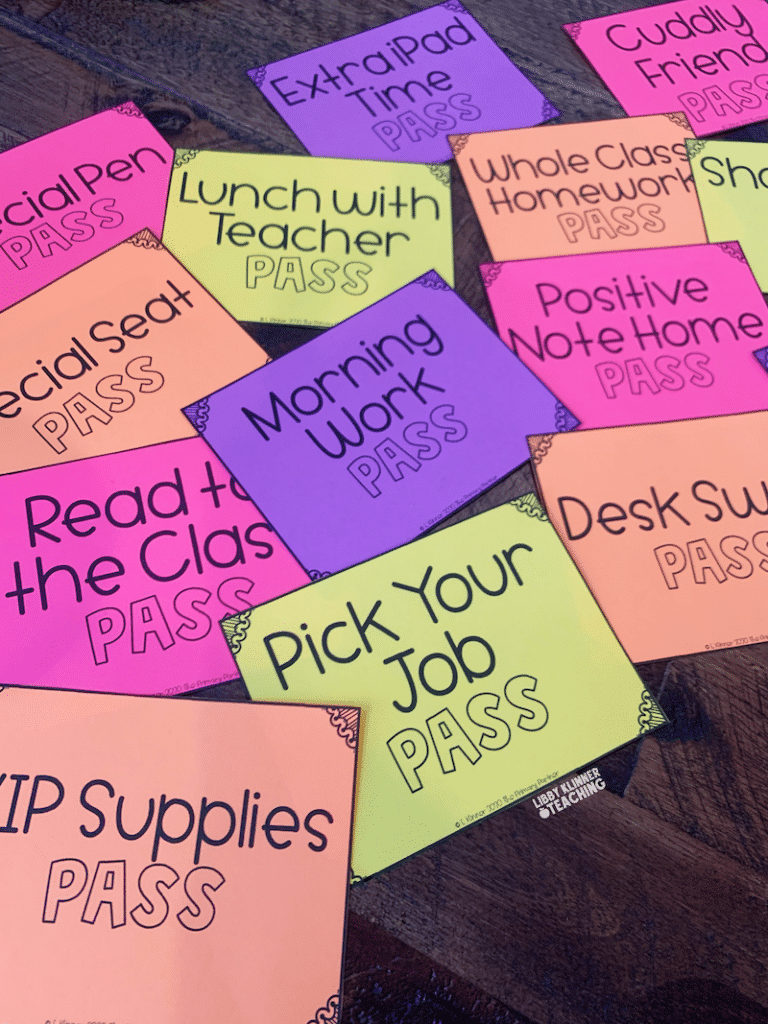

You can find these coupons in my Teachers Pay Teachers store. They also have an editable option to personalize them for your students! These are a really easy management tool and I love that it is something different from a treasure box. We hope that our students will learn to behave because it’s the right thing to do, so encouraging positive behavior choices as much as possible is important.
I’m also giving you a bonus tip!
Bonus: Plan for students that finish their work early

This is my latest attempt at curbing questions from early finishers! My students constantly ask what they can do when they are done, even when I’ve already told them. In the past, I’ve printed extra practice activities that they could choose from, but I got tired of keeping up with the copies.
I got these push lights from the dollar tree and made some labels for early finisher activities. When the light is on, they are allowed to do that activity when they finish their work. If the light is off, they may not.
Want to see how I set this up? Click here to watch an Instagram Reel I made!
I hope these classroom management strategies are helpful to you! These tips and tricks are so easy for me to implement in the classroom and they help me build relationships with my students.
If you’ve just found my blog and want to read more about how it got started, click here! You can find more freebies in my TpT store here.

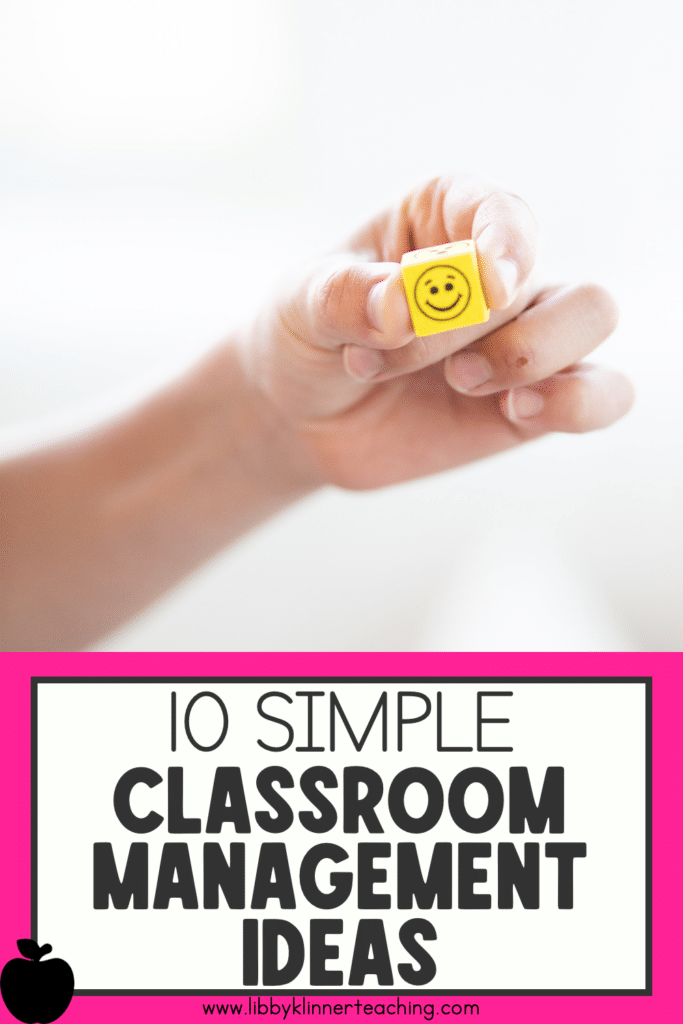

Hi, I’m Libby!
I’m so happy you’re here! I love all things first grade – the curriculum, the content, and the sweet kiddos. I’m passionate about helping K-2 teachers save time in the classroom with fresh ideas and fun, engaging resources.


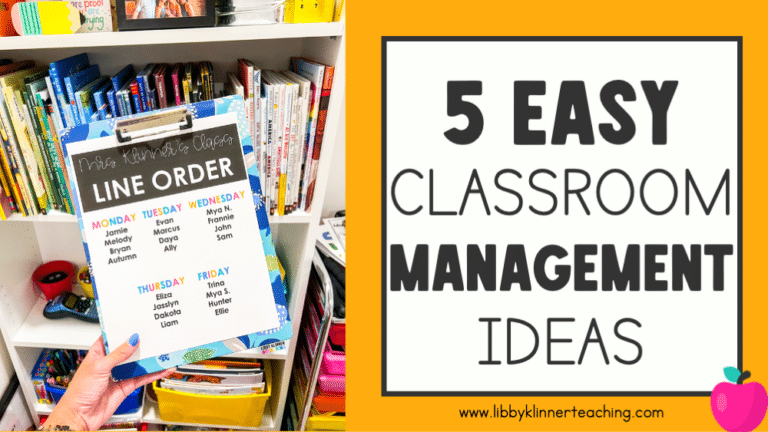
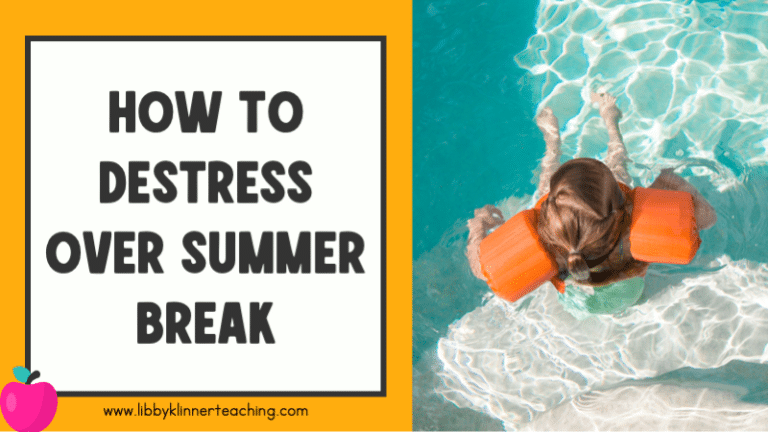
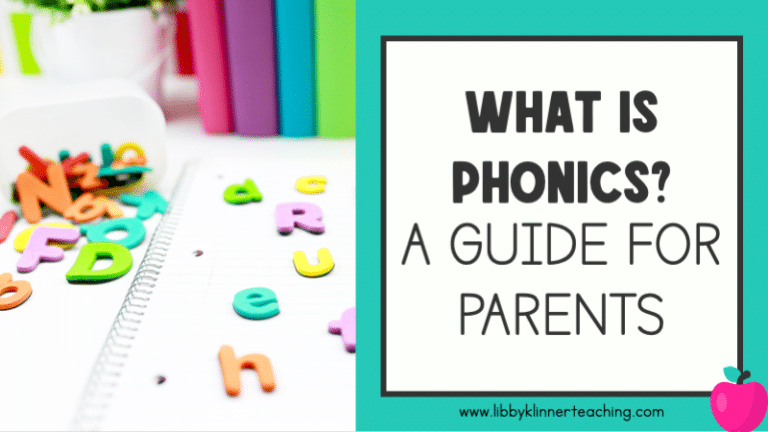

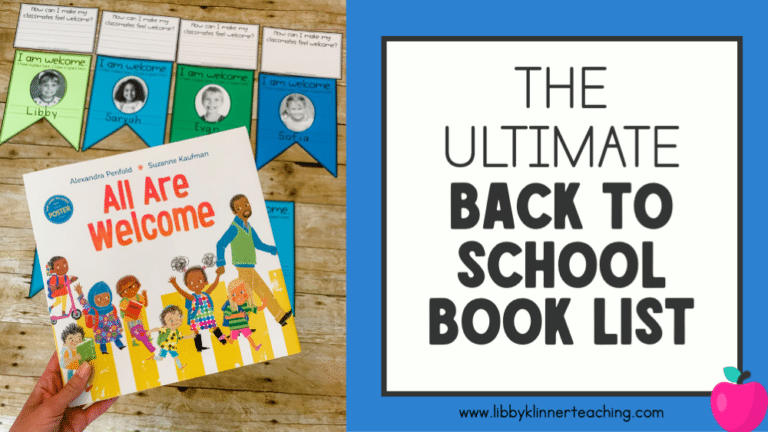

One Comment
Comments are closed.